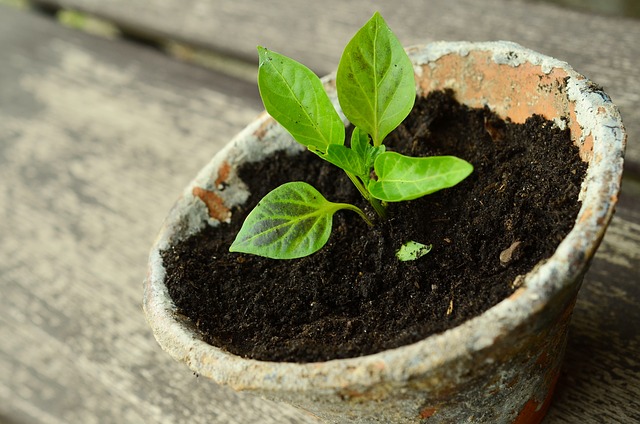
A friend recently asked me about the process of hardening off plants, so I decided to answer the question here. Hardening off is something I didn’t realize was necessary when I first began gardening. I didn’t have to deal with the consequences of skipping the step, though, because in my early gardening days I mostly direct sowed all my plants. Today, hardening off is an important part of my transplanting routine even if I hate it with a passion.
What is hardening off?
The process involves gradually exposing your indoor starts to the outside world. For weeks (and in some cases even months) your little seedlings have been coddled. You’ve provided them with the ideal conditions to grow and thrive. Thrusting them outdoors without preparing is the perfect way to ruin all your hard work. Indoor-grown plants have never experienced the power of the sun or the fluctuating climate since they’ve lived their lives on a windowsill or under grow lights. Via the process of hardening off, you allow your seedlings to get used to life outside.
How do I harden off my seedlings?
When it comes time to transplant certain plants outdoors, set aside a week or so to begin the hardening off process. Mark the start of the process on your calendar so you can keep track. I highly suggest investing in heavy-duty trays to make it easier to move your seedlings around. A plastic tray from the dollar store, a rolling cart, an easy-to-move table, are all suitable options. Here’s how the process should work:
- Start the process on a nice day. Don’t begin hardening off plants if it’s incredibly cold outside or if there’s a rainstorm brewing. If there’s no way to avoid weather extremes, keep an eye on your plants and offer up added protection (like fleece row covers if temps drastically plummet during your week of hardening off).
- Start slow. Bring your transplants outside and place them in a semi-shaded area for a few hours. Avoid direct sunlight right away to prevent leaf burn. Your indoor babies aren’t yet used to the strength of the sun’s rays.
- Each day, increase your plant’s time out in the sun. If it’s cloudy one day, don’t worry about it, though.
- Keep a close eye on delicate plants. Heat-loving plants like peppers and eggplants should be watched carefully for signs of stress. Don’t forget to continually check the forecast to prevent leaving your sensitive plants outside overnight.
- Don’t forget to water! Water your plants to prevent them from wilting, but don’t water as frequently as you might have when they were indoors.
- Start on a weekend. Even better, on a long weekend. The first few days your plants shouldn’t be exposed to direct sunlight or crazy weather. It’s best if you’re home to watch them and bring them in if need be.
- Transplant starts into the garden after about a week or so. Water and mulch to conserve moisture.
- Monitor your plants to watch for signs of stress and transplant shock. If your seedlings wilt and die, something has gone wrong in the process. You may have rushed things.
Pro tip for hardening off
Mistakes will happen. I’ve killed many plants during the hardening off process. If you’re new to this, harden off a few plants at a time, so you don’t accidentally wipe out your entire set of starts at once.
Be patient and communicate with other household members. Let your family, partner, or housemates know that you’re hardening off your plants. Explain how it works and how long it will take. Give everyone a heads up that the kitchen or entryway may be a bit cluttered for a week and that you may even need help bringing plants in and out each day.
Keep seed starting. Don’t stop starting seeds just because it’s time to harden off the majority of your seedlings. Succession sowing (and transplanting) allows you to always have new plants to fill empty spaces in the garden. One thing I’ve learned over the years is that immediately planting every square foot in my garden isn’t necessarily the best use of my time. Instead, I plant a few squares, wait a week, and plant (or transplant) more. That way, I don’t have 6 heads of lettuce or 5 squares of bok choi all maturing at once. A staggered harvest is much more manageable.
A confession
I don’t always stick to my schedule or tried and true methods. Sometimes, my impatience gets the best of me and sometimes I succeed at avoiding the whole rigamarole, but often it leaves me frustrated and disappointed that I’ve lost seedlings. I’ve learned from many mistakes, but my hatred for the hardening off process seems to override any sense and every lesson I’ve learned goes out the window when I’m eager to get the garden started.
Not everyone hardens off their plants the same way. Do you have a method that works for you? Do you hate the process as much as I do? Let me know by commenting on this post!
Excuse me while I go place my collards and kale on a tray to start the hardening off process. Wish me luck!

Steph Coelho is a freelance writer gardening in zone 5b. She is a certified Square Foot Gardener and has taught various garden-related workshops. When she’s not digging in the dirt or writing, she’s cooking up fresh produce, running, or listening to her favorite podcasts.
Leave a Reply